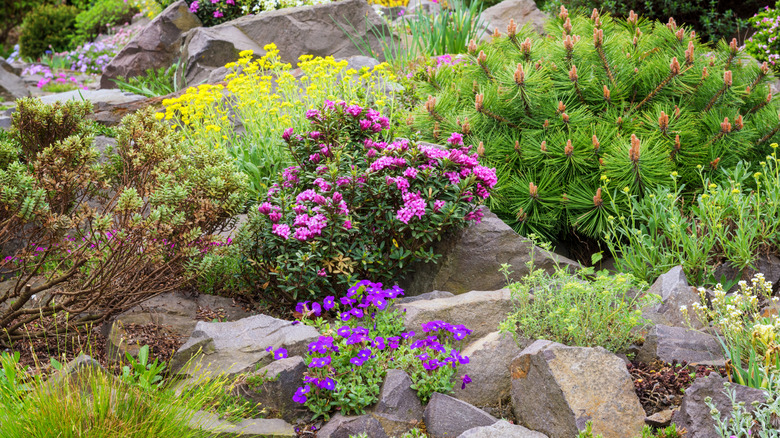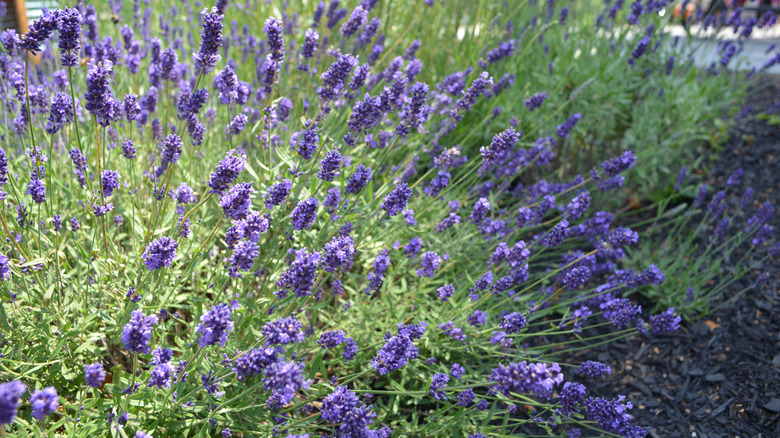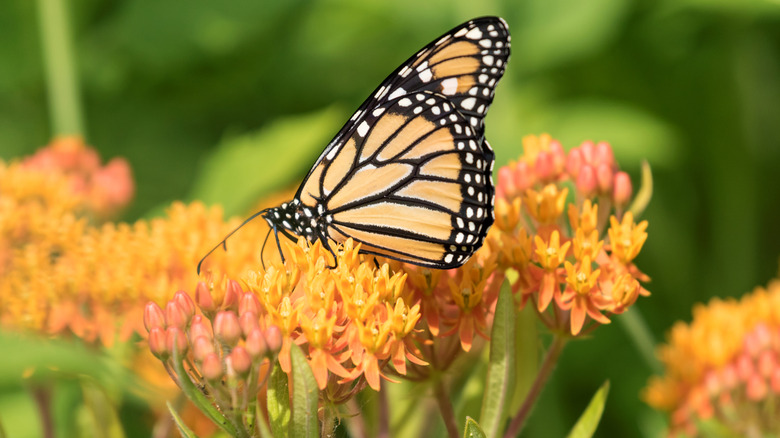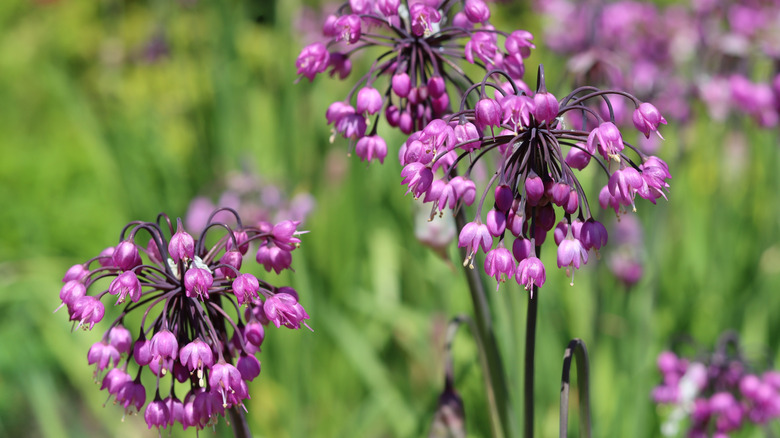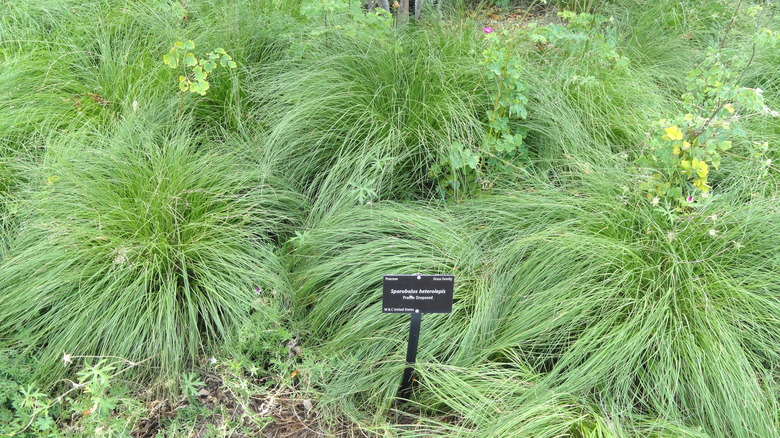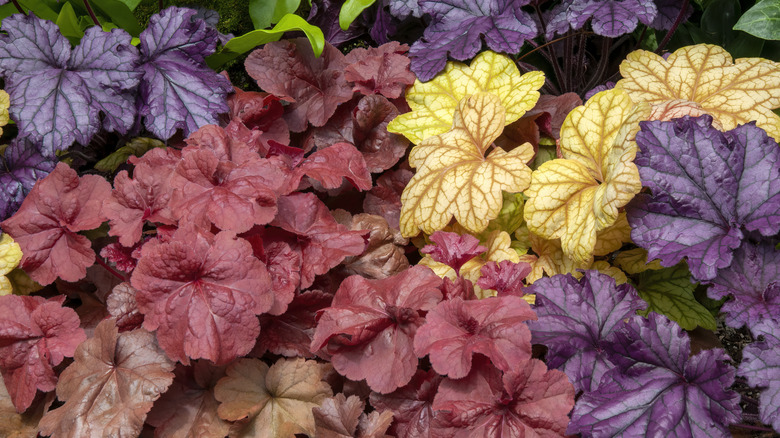5 Beautiful Plants That Grow Well In Gravel Gardens
To the uninitiated, replacing your lawn or garden with gravel might seem like it would offer dreary, lifeless results. But the best gravel gardens are just as serene, colorful, and full of wildlife as conventional gardens, and they require far less work. Many beautiful plants grow well in gravel gardens, particularly drought-resistant native plants, and those plants that are native to dry areas like the Mediterranean, California, or South Africa.
In gravel gardens, planting beds are covered in an even layer (typically at least 4 inches) of gravel. Depending on how you lay out your plants, the gravel can remain on display or eventually get covered in foliage. There are numerous benefits of trading out your lawn for a gravel garden: The gravel helps prevent weeds, provides drainage, and limits runoff. Gravel gardens are low-maintenance as well, requiring far less work and water than conventional gardens.
Ideally, your gravel garden should be in a sunny spot, with well-draining soil under the gravel. The key to success is choosing suitable plants. Plants that easily withstand dry conditions will thrive in gravel gardens and require minimal upkeep. Five beautiful plants to consider are English lavender, butterfly milkweed, nodding onion, prairie dropseed, and coral bells.
Lavender is a rugged herb that adds color and scent to gravel gardens
English lavender (Lavandula angustifolia), also known as common lavender, is famous for the relaxing fragrance of its purple flowers, which are used in everything from candles and soaps to teas. An evergreen shrub that grows in a round bushy shape, English lavender is native to the Mediterranean and cold-hardy in USDA zones 5 through 8. It's drought-tolerant and thrives in well-draining soil, making it a perfect candidate for gravel gardens. Just keep in mind that it requires at least six hours of full sun each day.
It's easiest to transplant English lavender or grow from cuttings, though it can also be grown from seed. In the summer when it blooms, you can expect to see plenty of pollinators in your gravel garden. Bees and butterflies love lavender flowers as much as humans do. To encourage more growth, prune your plants after they finish flowering.
Butterfly milkweed is an ideal addition for attracting pollinators to your garden
Experiment with native perennials for a unique burst of color in your gravel garden. Butterfly milkweed (Asclepias tuberosa) is one easy-to-grow option that's native to much of the United States. It's a food source and host plant for many types of butterflies and their larvae, hence its common name. Plant enough of these beauties, and your gravel garden will double as a butterfly garden. Butterfly milkweed requires full sun and is drought-tolerant. It's hardy in USDA zones 3 to 9.
In addition to the butterflies it attracts, butterfly milkweed's nectar also provides food for hummingbirds and other pollinators. The plant is also a source of beauty in itself, thanks to its vivid orange clusters of flowers. It blooms in late summer to early fall, and it can grow up to 3 feet tall. You can easily grow butterfly milkweed by direct sowing the seeds in the autumn. You can also propagate it from root cuttings.
The elegant flower heads of nodding onions are perfect garden additions
Another type of plant to consider for your gravel garden is the ornamental onion. One especially distinctive option is the nodding onion (Allium cernuum). It's native across much of North America and is hardy in USDA zones 4 to 8. A relative of grocery store onions, nodding onions are edible and smell like onions when bruised or crushed. Not often eaten these days, nodding onions are instead grown primarily for their beauty.
Nodding onions feature bell-shaped, hanging flowers that are typically purple or pink and bloom in early to mid-summer. They're incredibly hardy plants in the wild and thrive in many challenging locations. Just be sure to provide them with full sun and well-draining soil. Expect to see butterflies and bees feasting on the blooms. Many other popular ornamental onions aren't native to the US, but they are still worth considering for gravel gardens. These include drumstick allium with its wine-colored blooms and mouse garlic, which has lilac-colored flowers.
Grasses like prairie dropseed are perfect for adding texture to your garden
Grasses are an essential component for any gravel garden. They can serve as accents to complement your showier plants or as tall ground cover plants to disguise the gravel. A native grass like prairie dropseed (Sporobulus heterolepis) is an excellent candidate: It's long-living, drought-tolerant, and isn't flattened by snow. Prairie dropseed is native to central North America and is hardy in USDA zones 3 to 9.
Prairie dropseed has thin, emerald-green leaves and forms abundant clumps about 2 to 3 feet tall and wide. These leaves turn from green to a beautiful bronze in the fall, and they are reputed to smell a bit like fresh popcorn. In the summer you'll see small pink and brown blooms popping up on taller stalks within the grass. Birds, including juncos and sparrows, use the seeds as a food source.
Unlike many lawns, this native grass is low-maintenance and isn't prone to pest problems; all you have to do is remove the dried grass once a year. It can take years for prairie dropseed to mature from seed, so it's best to use plugs or divisions instead. If you're interested in a more diverse look, you can combine prairie dropseed with other native grasses, such as little bluestem and blue grama.
The flowers and foliage of coral bells make them a must have in gravel gardens
Lastly, it helps to incorporate a low-growing plant into your gravel garden to create visual interest and fill in gaps, particularly along borders and edges. Coral bells (Heuchera spp.), also called prairie alumroots, are native to the central U.S. and work well as ground cover. These plants grow in clumps of sizable low-growing leaves and feature bell-shaped flowers that grow on stalks in spring to early summer. They are hardy throughout USDA zones 3 to 9.
Coral bells prefer partial shade, but they can also tolerate full sun. There are a variety of coral bells native to the United States, and they boast a range of different leaf and flower colors. Some varieties, like 'Northern Exposure', even have purple or silver leaves. Considering all the options available, you're sure to be able to find the perfect cultivar for your gravel garden.
